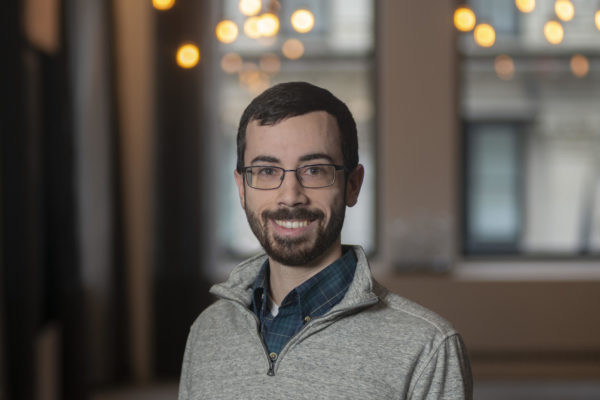
What is your role in the DESI project?
I am the co-chair of the Cosmological Simulations Working Group, which means I help organize the efforts to produce simulations of the maps of galaxies that DESI will make. These simulations help us figure out the ingredients that went into the early universe, even though we can only look at the final product—the galaxies today. It’s kind of like trying to figure out the ingredients of a cake by tasting it: you can make a good guess based on the flavors, but if you really want to know if you got the recipe right, you have to try to bake it yourself and see if it comes out the same. That’s what we do, thousands of times over, with our simulations.
Day-to-day, I write and run simulations and tools to help the DESI collaboration use the data. I write papers about the simulation techniques and tests we come up with to show that our simulations are high enough quality to match the amazing data being delivered by the DESI observations.
Where were you born? Where do you live now? What are the interesting places that standout that your work has taken you to?
I was born in Virginia, USA, grew up in the Philadelphia suburbs, and currently live in NYC. I was always interested in astronomy, but I sort of stumbled into studying it in undergrad after taking an introductory course. When I got to the cosmology courses, I was hooked!
Astronomy has given me many amazing travel opportunities, starting with Tokyo for an undergrad summer research project. Since then, I’ve been to conferences in Munich and Lisbon, and a summer school in Chile—that’s the Chilean summer, so I got to dodge the North American winter! I’ve gotten to visit observatories in the German Alps and the Chilean desert—the latter was really special, because it’s one of the darkest observing sites in the world, and you can see the Magellanic Clouds since it’s in the southern hemisphere. The Magellanic Clouds are a pair of satellite galaxies that orbit our galaxy; I had written my undergrad thesis on them, but had never seen them myself until that trip to Chile.
What would you say is the most interesting or exciting thing about your job?
I work on cosmological simulations, which are computationally demanding and require supercomputers to run. I love the challenge of squeezing every last ounce of performance out of a supercomputer, especially when doing so helps us learn something about the universe.
Any advice for aspiring scientists?
Astronomy is full of opportunities to combine your interests. Interested in astronomy and earth science? You can study exoplanet atmospheres. Astronomy and machine learning? There’s gravitational lens identification in telescope images. Astronomy and high-performance computing? Cosmological simulations (that’s me!). These are just a tiny fraction of the interdisciplinary possibilities!
And don’t be afraid to challenge yourself—as an undergrad, I knew computer science came more naturally to me than astrophysics. But studying astrophysics has proven rewarding exactly because it was challenging. Doing something challenging is often where we have the biggest opportunity for learning and growth.
Finally, what do you do for fun?
In pre-COVID times, I did tango dancing and rock climbing. These days, I like to explore the many parks of NYC on foot, and when the weather keeps me inside, I like to play video games and dream up the latest plot twist for my Dungeons & Dragons campaign.
